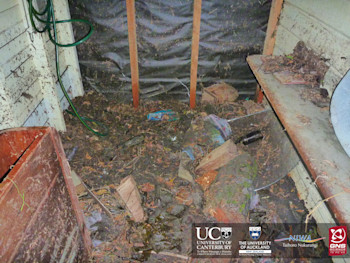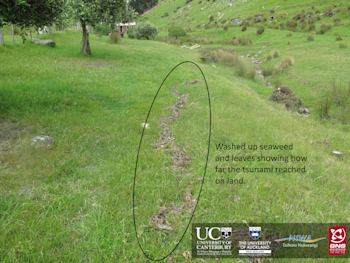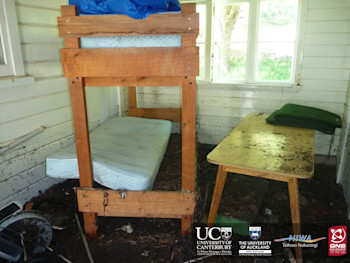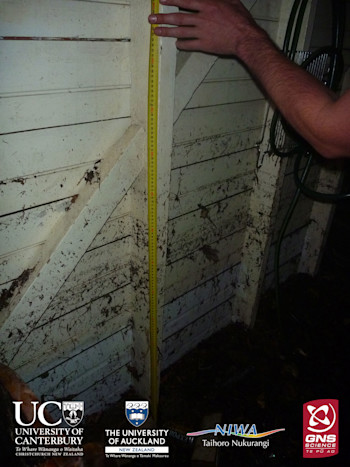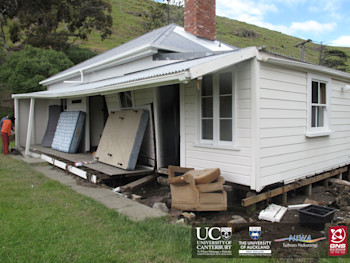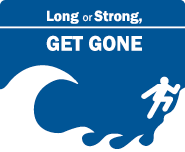
More info on the impact of Monday's tsunami
In the days since the earthquake, much of the focus here and around the country has been rightfully focused on the earthquake.
However, our tsunami scientists have been quietly hard at work, trying to understand how the tsunami played out. New Zealand tsunami scientists are a tight-knit bunch who work closely together. GNS Science's William Power was part of a team including NIWA, University of Auckland, and University of Canterbury, that went down to investigate reports of a damaged cottage on Banks Peninsula.
Tsunamis that hit land are rare, and unless they're the size of the ones that hit Japan in 2011 and Samoa in 2009, any signs of their presence (washed up seaweed etc) are often quickly eroded away by wind and rain.
There was not widespread damage from the tsunami, but tsunami scientists have found one spot of severe damage.
The damage to the cottage in Little Pigeon Bay on Banks Peninsula was substantial - so much so that, if the cottage was occupied at the time, this would be a much sadder story and there may have been fatalities. The power of the tsunami was enough to wrench the house off its foundations, partially caved in two external walls, and rip off the deck and deposit it on the beach. The damage wasn't just caused by water, tree trunks and other debris were carried in the tsunami which reached 4.1 metres above mean sea level and traveled 140 metres up the river creek next to the cottage.
Our closest tide gauge at Lyttelton only registered a tsunami approximately 1 metre high. This is a good reminder for both for people living near the coast and our own scientists that the real impact of a tsunami can be much worse than what our tide gauges record. GeoNet's 18 gauges dotted around the country only provide a glimpse of the true impact of a tsunami like this. Local wave heights can be amplified by the irregular nature of the seafloor, the shape of coasts and rivers, and how the earthquake disrupted the seafloor. If there was another tsunami caused by an aftershock (an unlikely scenario but see our probabilities story) its impact could be focused on a different part of the country.
This reconnaissance trip really reinforces Civil Defence's message that if you feel a long or strong earthquake, and you live on the coast don't wait for official warning evacuate immediately.
